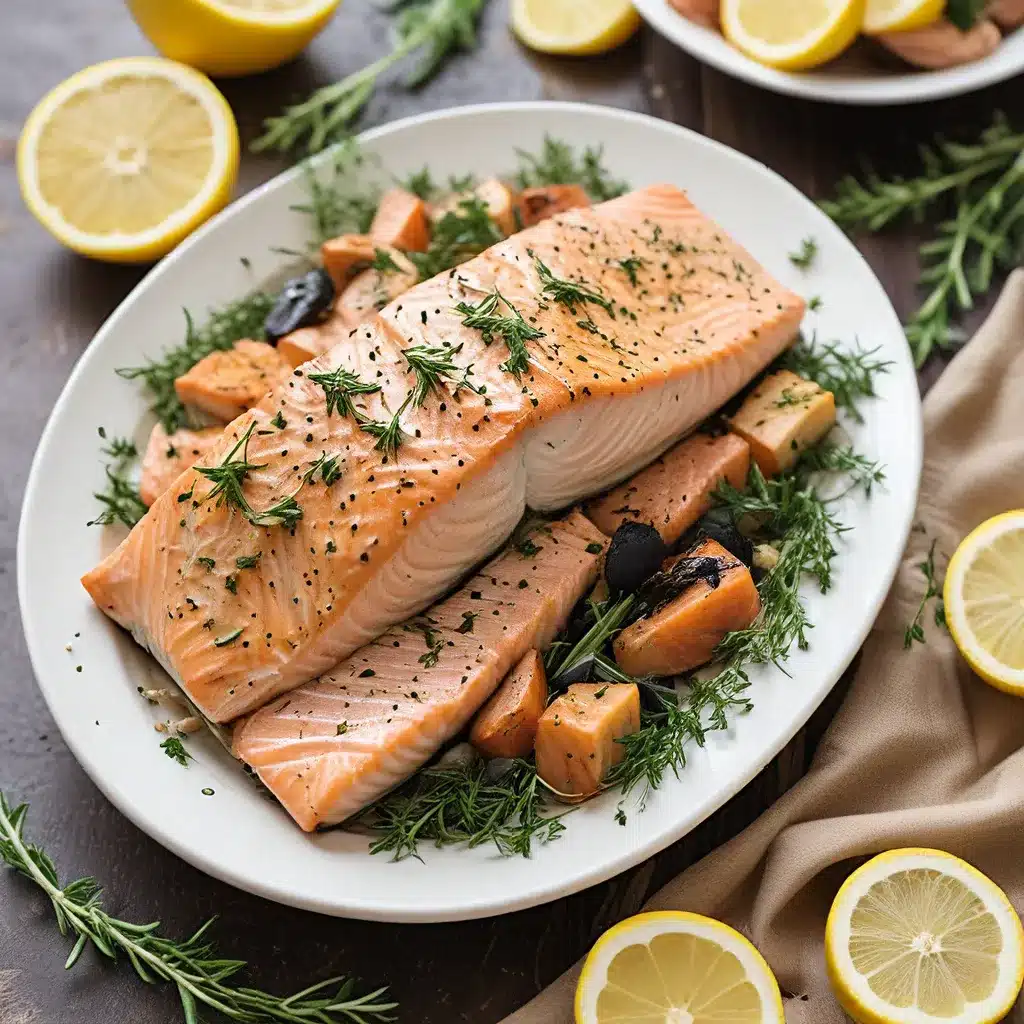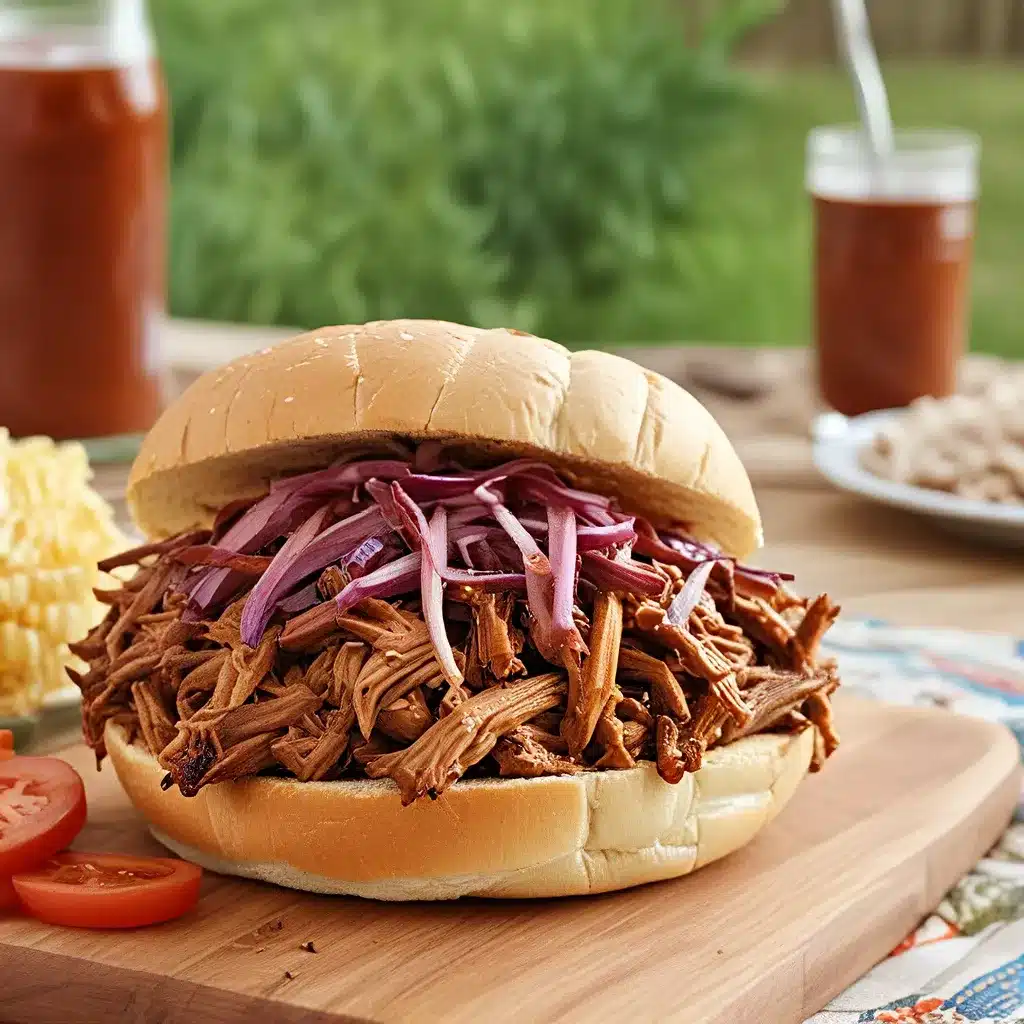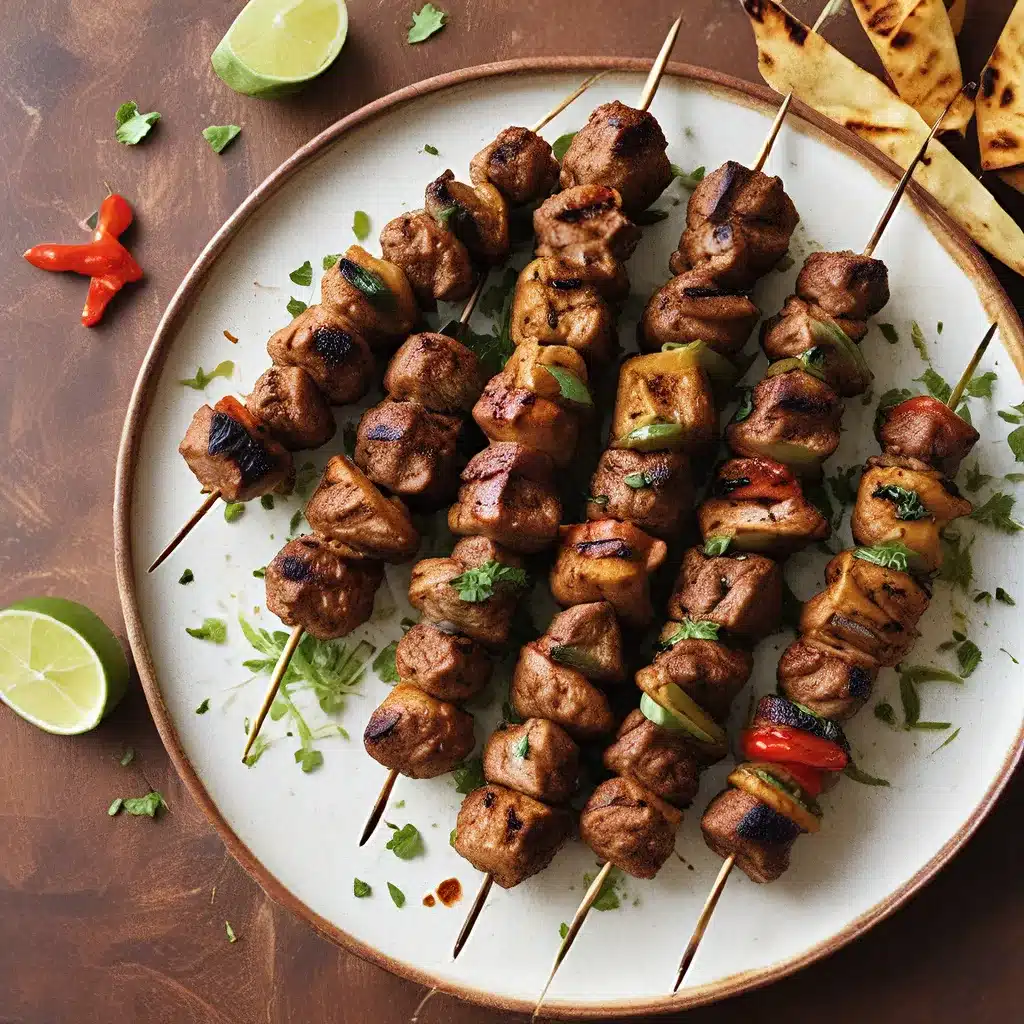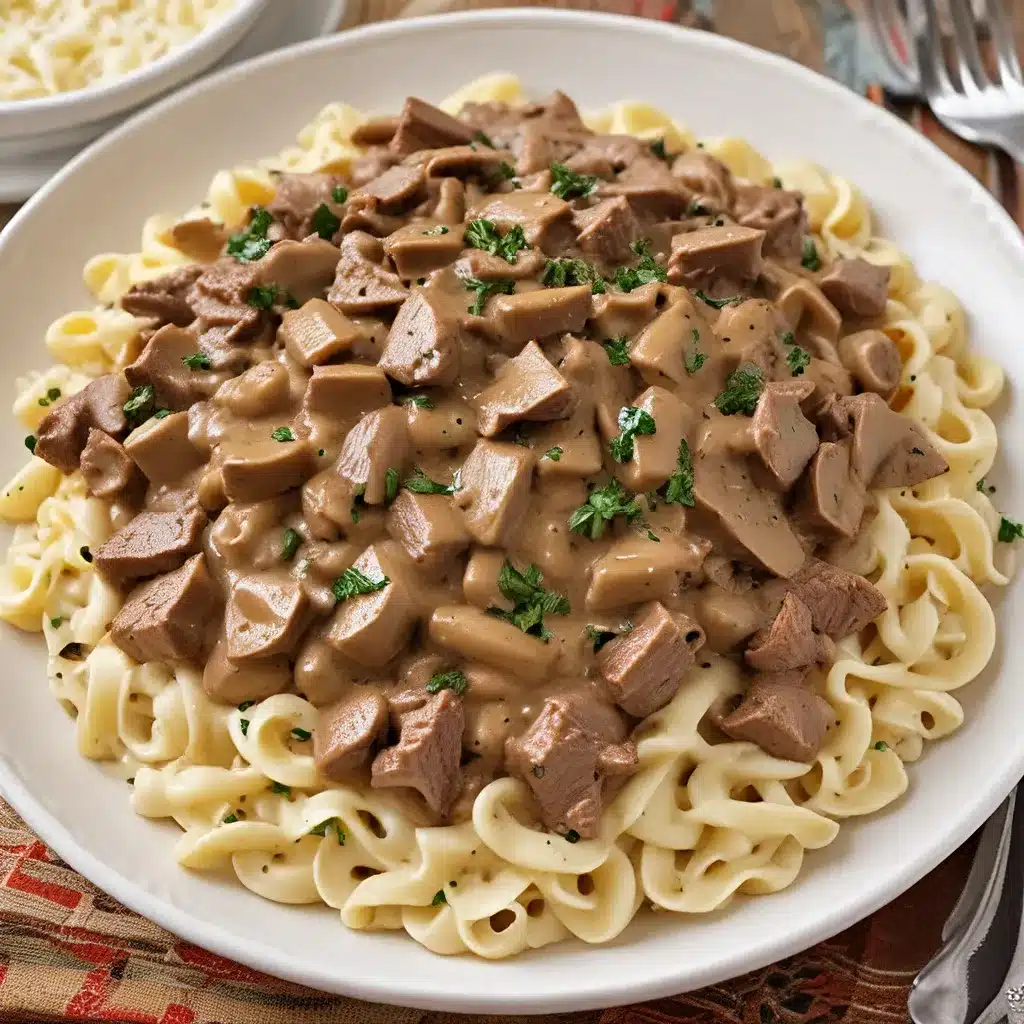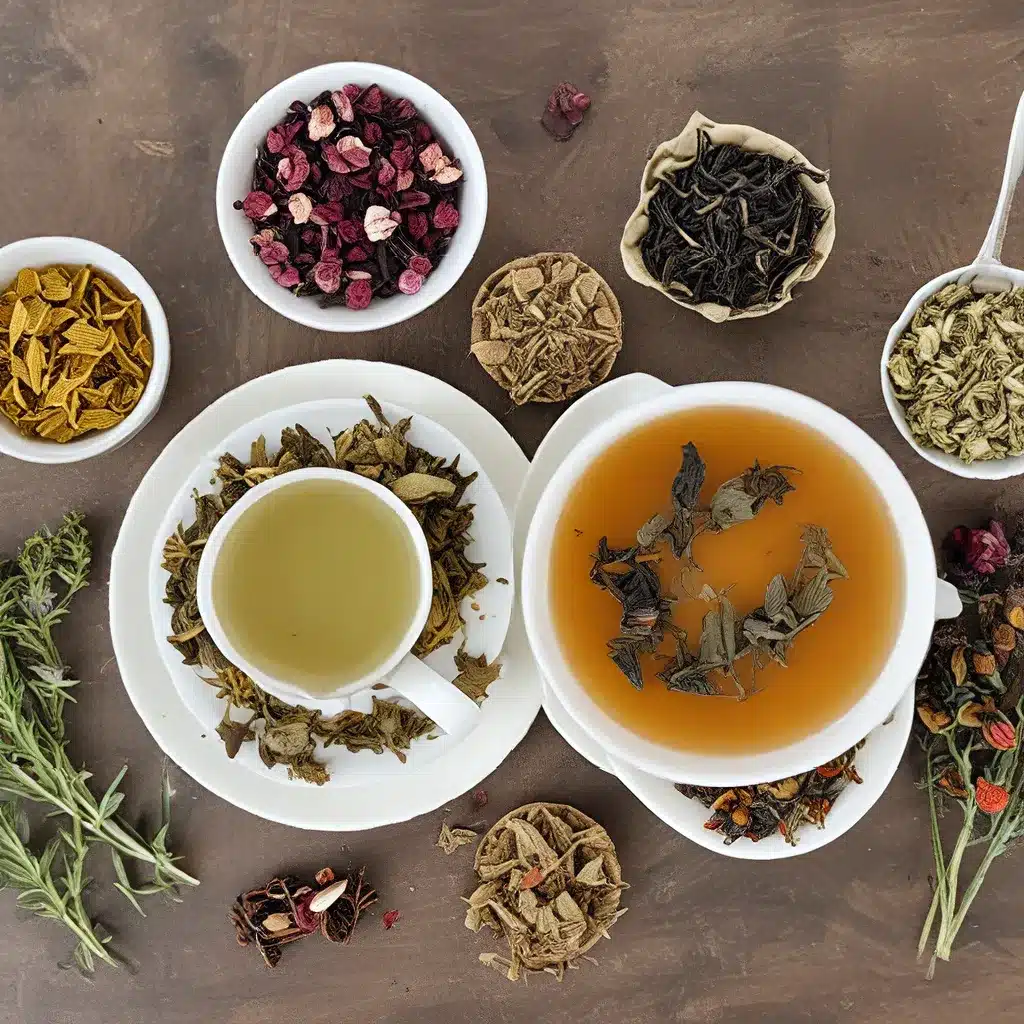
As a self-proclaimed tea enthusiast, I’ve always been fascinated by the rich history and captivating flavors of these beloved beverages. From the delicate floral notes of jasmine tea to the invigorating spice of a ginger blend, the world of tea is truly a treasure trove of sensory delights. Today, I’m excited to take you on a journey through the enchanting realm of herbal infusions and tea blends, where the boundaries of traditional and innovative converge.
Uncovering the Victorian Tea-Drinking Tradition
Let’s start by stepping back in time to the Victorian era, when the ritual of afternoon tea became a beloved social pastime. As I learned from my research, the Duchess of Bedford, Anna Russell, is credited with popularizing this captivating custom in the mid-1800s. Driven by the desire to stave off the pangs of hunger between the increasingly late dinner hour of 8 p.m., the Duchess and her high-society friends would gather for a lighter meal of scones, cakes, and, of course, a steaming pot of tea.
This tradition, known as Afternoon Tea, was often taken around 4 p.m. and became a way for the socialites to indulge in some much-needed sustenance and camaraderie. But the Victorians didn’t stop there – they also introduced the concept of Nursery Tea, a children’s version of the afternoon ritual, typically served with biscuits rather than sweets.
For the working class, however, the High Tea held a different significance. Consumed between 5 and 6 p.m., this heartier meal often included a protein-rich dish alongside the tea, earning it the alternative moniker of “meat tea.” It was a practical way for the laborers to refuel after a long day’s work.
As I discovered in my research, the art of brewing the perfect pot of tea was a true skill in these bygone eras. Hostesses would carefully curate their tea selections, often offering a diverse array of black, green, herbal, and even white teas to cater to their guests’ preferences.
Exploring the World of Black Tea
When it comes to the world of tea, black tea stands as the most widely consumed variety. Renowned for its robust, full-bodied flavor, black tea undergoes a meticulous four-step process: withering, rolling, fermenting, and finally, firing. This careful craftsmanship ensures that the leaves lose their grassy, herbaceous notes and develop the rich, malty characteristics we’ve come to associate with black tea.
Some of the most popular black tea blends include:
– Assam: A hearty, bright-colored tea with a rich, malty profile, hailing from the Assam region of northeastern India.
– Black Currant: A blend of black tea and dried currants, infused with a delightful berry aroma.
– Darjeeling: A full-bodied tea with a beautiful red-gold hue, prized for its delicate, complex flavors.
– Earl Grey: Featuring the citrusy notes of the Citrus bergamia fruit, this medium-bodied tea comes in various blends, including the indulgent Earl Grey Cream.
– English Breakfast: A robust blend of Ceylon and Indian black teas, perfect for starting the day with a bold, invigorating sip.
As I discovered, the Victorians were particularly fond of these black tea varieties, often incorporating them into their elegant afternoon and high tea spreads. Just imagine the aroma of a freshly brewed pot of Earl Grey Cream, accompanied by a tray of delicate finger sandwiches and fluffy scones – it’s enough to transport you to a bygone era of refined sophistication.
Delving into the Realm of Green Tea
While black tea may have dominated the Victorian tea scene, the allure of green tea was certainly not lost on the discerning palates of the era. Unlike its oxidized counterpart, green tea is prized for its unique processing method, which involves pan-firing the leaves to prevent fermentation and preserve their natural vibrancy and nutritional properties.
Some of the captivating green tea varieties include:
– Chinese Flower: A citrus-infused blend of rosebuds, marigold, and cornflower, originating from the Middle Kingdom.
– Green Tea Chai: A creamy, spice-forward blend that combines exotic spices with vanilla and honey for a soothing, comforting sip.
– Gunpowder Green: Also known as Pearl Tea, this medium-bodied green tea is distinguished by its tightly rolled leaves that unfurl upon infusion.
– Gyokuro: A rich, jade-colored tea with a fresh, herbaceous aroma that awakens the senses.
– Sencha Kyoto: A delicate, light-bodied tea composed of delicate cherry blossoms, offering a sweet, refreshing profile.
While green tea may not have been as prominent in the Victorian tea rituals, it has undoubtedly maintained its allure and popularity throughout the ages. Today, tea enthusiasts continue to explore the nuanced flavors and potential health benefits of these vibrant, antioxidant-rich elixirs.
Uncovering the Wonders of Herbal Infusions
Beyond the traditional black and green tea varieties, the world of herbal infusions offers a delightful realm of exploration. These caffeine-free blends utilize the entire plant, from root to flower, to create unique and often medicinal beverages.
Some of the captivating herbal teas include:
– Chamomile: A relaxing, full-bodied tea with a hint of green apple, perfect for sipping before bedtime.
– Hibiscus: A bright, tart tea that is high in vitamin C and may even aid in lowering blood pressure.
– Lavender: A sweet-smelling, calming tea that turns a lovely light purple hue.
– Lemon Balm: A gentle, citrusy tea that may help with digestion.
– Peppermint: A refreshing, fragrant tea that can help alleviate stomach pains and congestion.
– Rosehips: A delightful blend of rosehips, hibiscus, and vitamins A, B, C, E, and K.
Herbal teas have long been revered for their medicinal properties, and it’s fascinating to see how their use has evolved over time. While the Victorians may have incorporated them into their tea rituals for their curative qualities, modern tea enthusiasts continue to explore the diverse flavors and wellness benefits of these botanical blends.
Discovering the Delicacy of White Tea
Finally, let’s venture into the realm of white tea, a delicate and prized variety that was likely less familiar to our Victorian ancestors. Unlike black and green teas, white tea is made solely from the tender, young tips of the tea plant, which are hand-rolled and minimally processed to preserve their natural sweetness and subtle nuances.
Some of the enchanting white tea varieties include:
– Mutan White: A delicate tea composed of silvery white buds and green leaves.
– Pai Mu Tan: Also known as White Peony, this tea is golden in color and delightfully sweet.
– Sow Mee White: This unique tea boasts a toasty flavor that adds a twist to the normally sweet white tea profile.
– Yin Chen: Also known as Silver Needles, this slightly sweet tea is considered a true delicacy.
These caffeine-free, antioxidant-rich white teas are typically enjoyed on their own, without the accompaniment of a meal. Their delicate, almost ethereal nature makes them a captivating choice for those seeking a moment of quiet reflection and pure, unadulterated tea pleasure.
As I delve deeper into the world of tea, I’m continually amazed by the depth and complexity of these beloved beverages. From the robust, malty blacks to the vibrant, herbaceous greens, and the ethereal, sweet whites, there’s a tea to suit every mood and palate. And let’s not forget the wonders of the herbal infusions, each one offering its own unique flavor profile and potential health benefits.
Whether you’re a seasoned tea connoisseur or just beginning to explore this captivating realm, I encourage you to embark on your own tea-tasting journey. Discover the delights of a fragrant Earl Grey Cream, the soothing comfort of a chamomile blend, or the refreshing zing of a peppermint infusion. The possibilities are endless, and the rewards are truly immeasurable.
So, grab a cozy mug, find your favorite armchair, and let the enchanting world of tea whisk you away to a realm of timeless elegance and sensory delight. Happy sipping!

